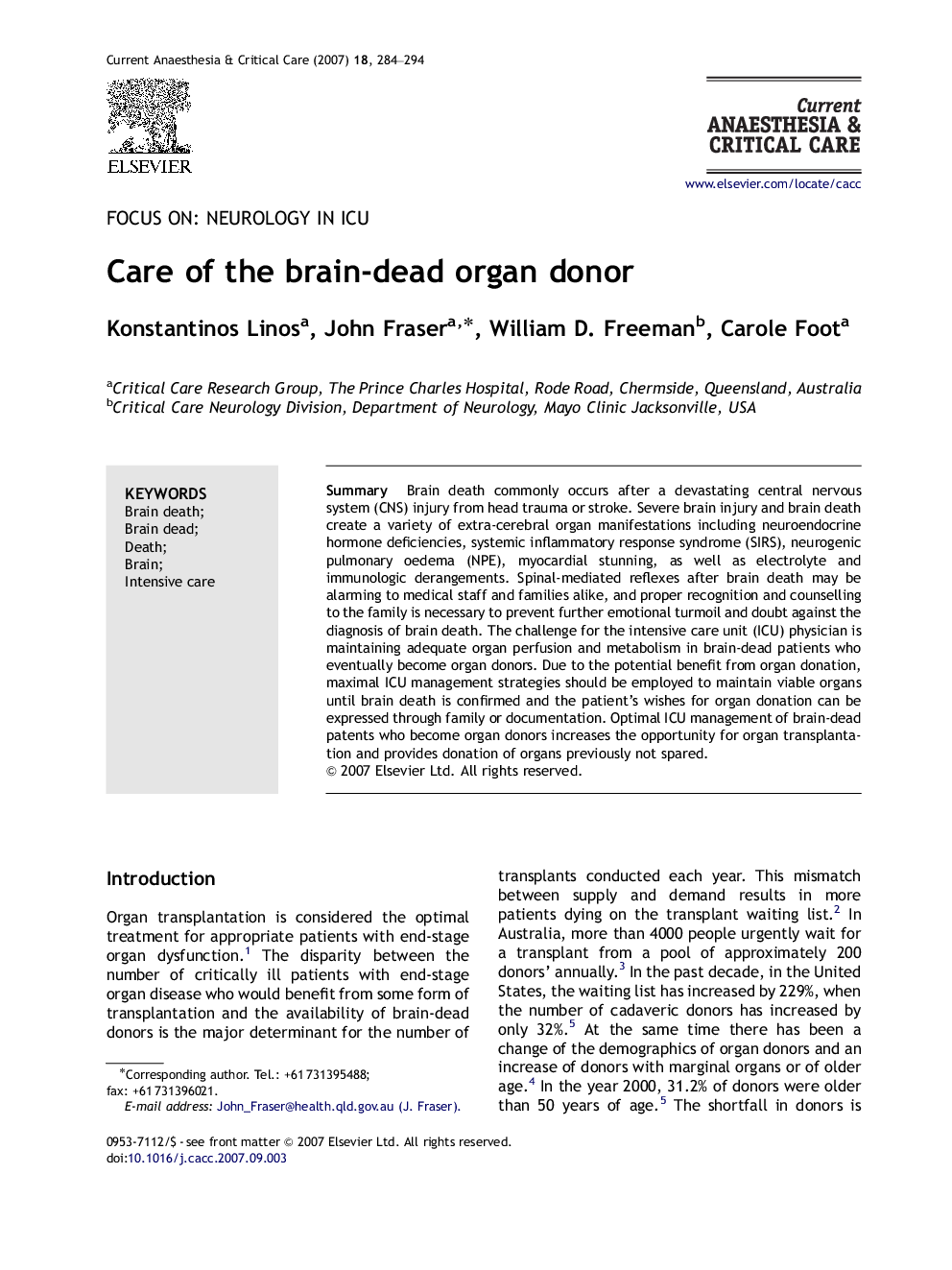| Article ID | Journal | Published Year | Pages | File Type |
|---|---|---|---|---|
| 2607791 | Current Anaesthesia & Critical Care | 2007 | 11 Pages |
SummaryBrain death commonly occurs after a devastating central nervous system (CNS) injury from head trauma or stroke. Severe brain injury and brain death create a variety of extra-cerebral organ manifestations including neuroendocrine hormone deficiencies, systemic inflammatory response syndrome (SIRS), neurogenic pulmonary oedema (NPE), myocardial stunning, as well as electrolyte and immunologic derangements. Spinal-mediated reflexes after brain death may be alarming to medical staff and families alike, and proper recognition and counselling to the family is necessary to prevent further emotional turmoil and doubt against the diagnosis of brain death. The challenge for the intensive care unit (ICU) physician is maintaining adequate organ perfusion and metabolism in brain-dead patients who eventually become organ donors. Due to the potential benefit from organ donation, maximal ICU management strategies should be employed to maintain viable organs until brain death is confirmed and the patient's wishes for organ donation can be expressed through family or documentation. Optimal ICU management of brain-dead patents who become organ donors increases the opportunity for organ transplantation and provides donation of organs previously not spared.
